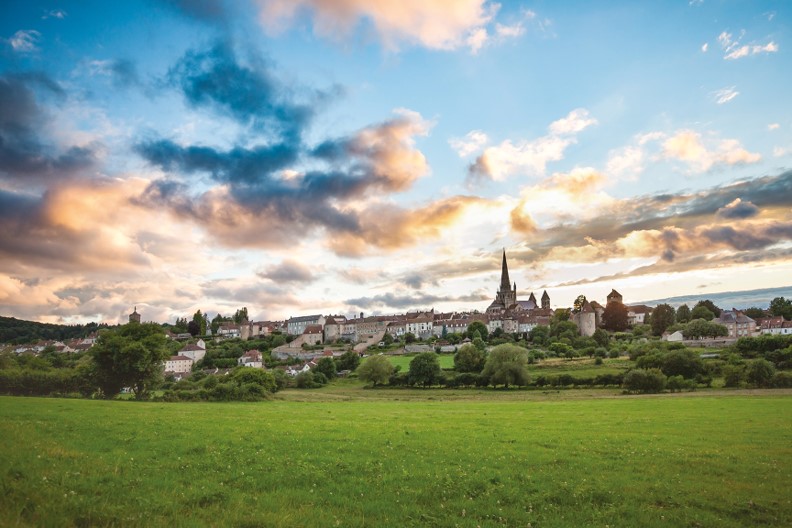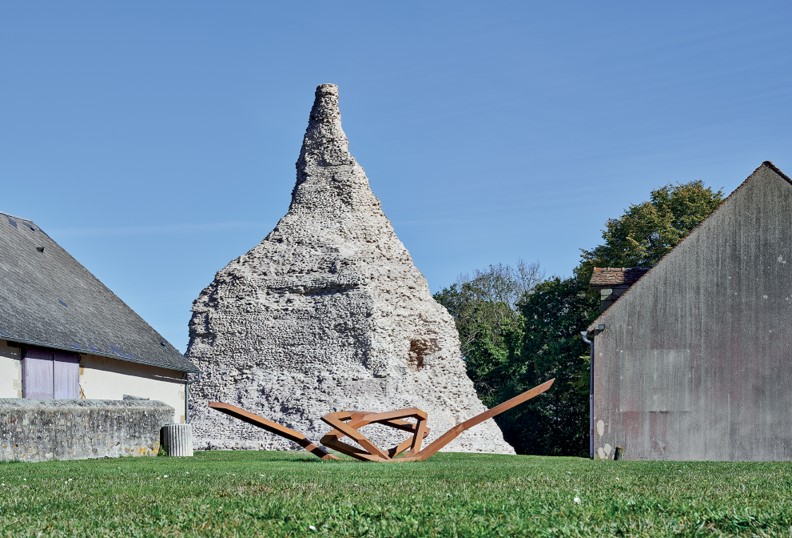Autun

Autun was built on a hillside, bathed by the river Arroux, at the crossroads of strategic natural routes at the convergence of the Loire and Rhône basins. This position partly explains the birth of the town in the 1st century BC and the desire of the Emperor Augustus to establish the chief town of the Aeduan people there, in place of the old Gallic capital, Bibracte.
From the outset, the city of Augustodunum (literally the fortified city of Augustus) was endowed with a prestigious monumental ornament and imposed itself by a thoughtful urban planning which earned it its nickname recalling the capital of the Empire soror et aemulae Romae (sister and emulator of Rome).
From this prestigious ancient past, Autun retains elevated remains that mark the urban landscape. The rampart still serves as a retaining wall for part of the city. The six-kilometer wall is preserved over nearly three-quarters of its length. The entrances at the four cardinal points were intended to be ostentatious. The gates of Arroux (to the north) and Saint-André (to the east) remain monumental and richly decorated. The theatre has no equal in size, with the exception of Pompey’s in Rome. It could accommodate up to 20,000 spectators. In addition to the monuments still standing, archaeology reveals all the aspects of the ancient city: craftsmen’s quarters, rich residences... These are all traces of an active, cultured population, imbued with Hellenism, as shown by the collections kept in the Rolin Museum.
Autun’s influence did not wane during the Middle Ages. As the seat of one of the first bishoprics in France, its bishop Rhetice took part in the Council of Rome in 313. The town is dominated by the tall silhouette of the current Saint-Lazare cathedral. The dating from the 12th century, it synthesizes the abundance of the Middle Ages. Its construction is the result of a process that was as much political as spiritual. In a spirit of concord, the Duke of Burgundy granted Bishop Etienne de Bâgé a plot of land to build a pilgrimage church dedicated to Saint Lazarus. Situated on the road to Compostela, Autun became an essential point of passage for pilgrims at the time. This cathedral became an effective means of communication for the 12th century town, which relied on it for its economic influence. In the 15th century, the city and the building were marked by the Rolin family: Nicolas, the father, then Jean, the son, endowed the city with major works of art, such as the Madonna of Chancellor Rolin by Jan van Eyck.
Historically rich, Autun is always looking to the future. Many projects give pride of place to contemporary artistic and architectural creation. The choice made with Robert Schad inserts his work in a district dominated by the silhouette of the temple of Janus. Today, it remains the only elevated vestige of a vast suburban cult complex. The archaeological research programme that has just been completed shows its full extent with the discovery of religious structures, structured craftsmen’s quarters, baths and a second theatre.
Patrick RYON
Deputy Mayor in charge of Culture and Heritage
www.autun.com
